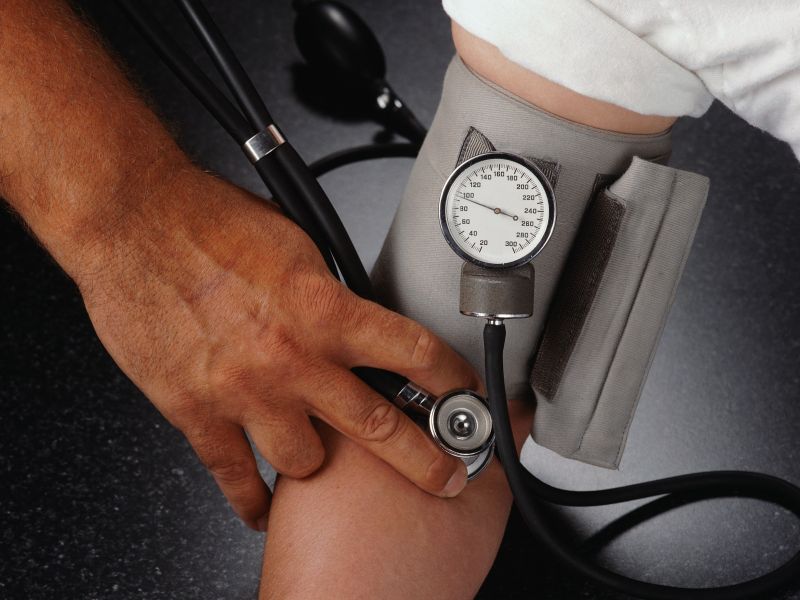The 'Bottom' Blood Pressure Number Matters, Too
By Amy NortonHealthDay Reporter

THURSDAY, July 18, 2019 (HealthDay News) -- When it comes to blood pressure readings, the "top" number seems to grab all the attention.
But a large, new study confirms that both numbers are, in fact, critical in determining the risk of heart attack and stroke.
Blood pressure measurements are given as a "top" and "bottom" number. The first reflects systolic blood pressure, the amount of pressure in the arteries as the heart contracts. The second reflects diastolic blood pressure, the pressure in the arteries between heart muscle contractions.
For years, systolic blood pressure has been seen as the one that really matters. That's based on studies -- including the famous Framingham Heart Study -- showing that high systolic blood pressure is a stronger predictor of heart disease and stroke.
At the same time, though, doctors measure both systolic and diastolic blood pressure, and treatment guidelines are based on both. So just how important is that diastolic number?
"The idea behind this new study was to address the confusion," said lead researcher Dr. Alexander Flint, an investigator with Kaiser Permanente Northern California's division of research.
Using medical records from 1.3 million patients, his team confirmed that, yes, high systolic blood pressure was a stronger risk factor for heart attack and stroke. But those risks also climbed in tandem with diastolic pressure; and people with normal systolic readings were still at risk if their diastolic pressure was high.
"There's been a common belief that systolic blood pressure is the only one that matters," Flint said. "But diastolic definitely matters."
He and his colleagues reported the findings in the July 18 issue of the New England Journal of Medicine.
The definition of high blood pressure has gotten a revamp in recent years. Guidelines issued in 2017 by the American College of Cardiology (ACC) and other heart groups lowered the threshold for diagnosing the condition -- from the traditional 140/90 mm Hg to 130/80.
The fact that treatment guidelines include a diastolic pressure threshold implies that it's important. And indeed it is, said Dr. Karol Watson, a member of the ACC's prevention section and leadership council.
In fact, she said, doctors once thought that diastolic blood pressure was the more important one -- based on research at the time. Then came the studies showing that systolic pressure was generally a better predictor of people's risk of heart disease and stroke.
In addition, Watson said, high systolic blood pressure is more prevalent, because of natural changes in blood pressure as people age.
"As we get older, systolic blood pressure keeps marching up," she explained. Diastolic blood pressure, on the other hand, generally peaks when people are in their 40s to 60s -- and then it declines.
But it's clear, Watson said, that while systolic and diastolic blood pressure are different, they both deserve attention.
In the latest study, cardiovascular risks rose with each "unit increase" in systolic pressure above 140, by about 18% on average. Meanwhile, each increase in diastolic blood pressure above 90 was tied to a 6% increase in heart disease and stroke risk.
The researchers saw a similar pattern when they looked at blood pressure increases above the 130/80 threshold. That, Flint said, supports the 2017 guideline shift.
The findings are based on over 1.3 million patients in the Kaiser Permanente health system who had roughly 36.8 million blood pressure readings taken from 2007 through 2016. Over eight years, more than 44,000 patients had a heart attack or stroke.
According to Flint, it's the largest study of its kind to date.
The bottom line for patients, Watson said, is that they should care about both blood pressure numbers. In her experience, she noted, patients often point to the number that's in the normal range and say, "But look how good this is."
Flint agreed, saying that no one should "ignore" the diastolic number. "It's important not only in blood pressure treatment, but on the side of diagnosis, too," he said.
More information
The American Heart Association has a guide on high blood pressure.

The news stories provided in Health News and our Health-E News Newsletter are a service of the nationally syndicated HealthDay® news and information company. Stories refer to national trends and breaking health news, and are not necessarily indicative of or always supported by our facility and providers. This information is provided for informational and educational purposes only, and is not intended to be a substitute for medical advice, diagnosis, or treatment.

